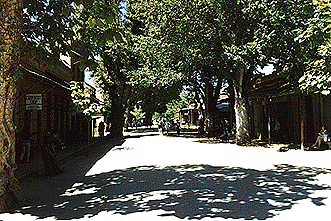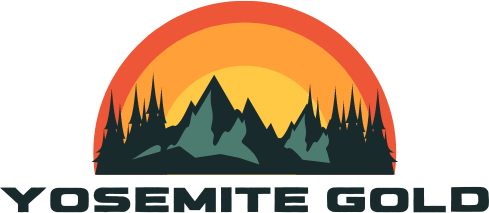 |
Columbia is the heart of the richest gold mining area in the Mother Lode. It’s history can be traced back to the original gold rush. In 1850, the first miners began arriving and, within a month, about 6,000 miners, most living in tents, called Columbia home. By the end of 1852, the new community had more than 150 stores–including lots of saloons.
In 1854, fire, the scourge of many mining towns, destroyed everything in Columbia’s central business district except the one brick building. When the town was rebuilt, locally produced red brick was used for 30 buildings. Iron doors, iron window shutters and bricks laid on the buildings’ roofs were additional fire protection. A year later, the local water company provided piped water for firefighting and domestic use. Seven cisterns, each with a capacity of 14,000 gallons, were built under the streets. Some still store water for firefighting today. The early pipes were used until 1950, when the state installed a new water system.
In 1857 a second fire destroyed all the frame structures in the 13-block business district as well as several of the brick buildings. Rebuilding began immediately, and the citizens decided to form a volunteer fire department.
After 1860, when the easily mined placer gold was gone, the town began to decline. In the 1870s & ’80s many of the vacated buildings were torn down and their sites mined, and Columbia ‘s population dropped from a peak of 6,000 to about 500. The town continued to survive, but not prosper for many years. During the 1920’s ideas began to arise concerning the inclusion of Columbia into the new and growing California State Park System. A very serious but ultimately unsuccessful attempt to make Columbia a State Park occurred in 1934. By this time the town was quite run down. Many of the structures had become public nuisances and were falling down. In 1945 the effort was finally successful. The Legislature passed a bill appropriating $50,000 to be matched by public subscription for the acquisition of lands and buildings in the old business s ection of Columbia. Thus, Columbia State Historic Park was born.
Today Columbia is unique in California. It’s a state park but it’s also a living community. Original buildings with their iron doors have been restored. There are guided tours, stage coach rides, live theatre, horseback riding, gold panning, restaurants, shopping and two 1850’s era saloons. Because Columbia State Park is also a town, admission is free and it’s open 365 days of the year. To pass up Columbia would be to pass up perhaps the best opportunity to see how life really was here in the wild west.
 |
 |
||
| jail.jpg 64k | fallon.jpg 57k |
